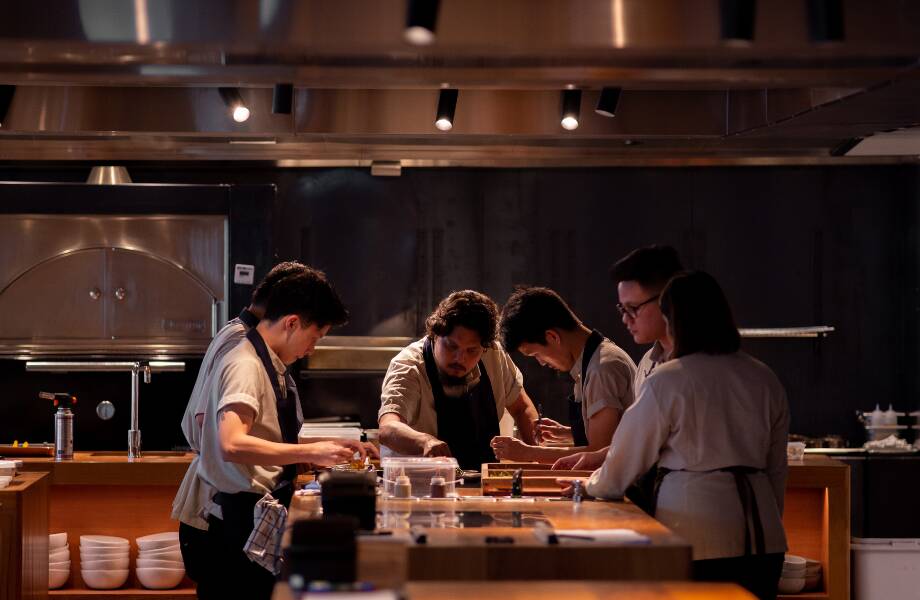CCTV-produced food documentary A Bite of China became an instant phenomenon when it debuted in 2012, and continued to capture the hearts (and stomachs) of viewers across China with its second season in 2014. Both seasons were directed by 28-year CCTV veteran Chen Xiaoqing, who left the network in 2017 to found a documentary production lab, and who is now is the Vice Chief Editor of Tencent Video.
A quick look at Douban, the movie/TV/music/book review site where the harshest internet critics gather, indicates that Chen was much better than his successors on A Bite of China: Seasons 1 and 2 scored ratings of 9.3/10 and 8.4/10, respectively, while Season 3, which came out in February of this year, currently sits at a dismal 3.7/10.
 Food Documentary “A Bite of China” Goes Stale in Season 3Article Feb 27, 2018
Food Documentary “A Bite of China” Goes Stale in Season 3Article Feb 27, 2018
On October 28, Chen returned to the attention of web series binge-watchers as the director of Once Upon a Bite (风味人间), a new food documentary produced by Tencent. The eight-episode documentary features the voice of Li Lihong, A Bite of China‘s narrator, as well as the camera crew and culinary, academic, and scientific consultants that worked on Chen’s previous show. Once Upon a Bite even features music by Roc Chen (阿鲲), the same composer who provided the memorable soundtrack for A Bite of China.
In the past 7 days, the documentary and all of its trailers have been viewed over 250 million times total, and the new program enjoys a 9.4 rating on Douban.
Chinese people do love eating and cooking, but why is Once Upon A Bite proving to be even more popular than A Bite of China?
Reason 1: Chen Xiaoqing is a real foodie
If you take a look at his Weibo, you will find a food seminar there, with countless comments and discussions regarding food and cooking taking place between Chen and his followers. Looking at all of the food-spam photos he posts from wherever he goes, you can tell that he genuinely enjoys and understands eating.
Reason 2: A wider world of food
Nearly one third of the content on Once Upon a Bite is related to foreign delicacies. In one segment we see how a couple in China’s eastern Anhui province makes pork into ham, while in another we learn about Spanish Iberico ham and how to cut it properly.



Although both are mashed potatoes, Once Upon a Bite also shows us the difference between Shaanxi’s 洋芋搅团 (yang yu jiao tuan) and pommes aligot from the south of France for example:


Reason 3: Scientific detail
By collaborating with the University of Science and Technology of China, the Once Upon a Bite production team shows in minute detail how raw materials transform into the food we taste, employing a camera technique called super photomicrography to depict these transformations on the microscopic level. Thanks to this method, we can literally see ham getting more delicious by the second as it cures in salt:

Mmm…
The first episode of Once Upon a Bite is entitled “Between the Mountain and the Sea,” and its central message seems to be that among complex geographical conditions and climates, people adjust their lives and make food with what they get from nature. One family of Xinjiang herders make fresh lamb, cooked directly after being peeled off the bone, while in another segment a father-son team from Taiwan spend three days on the sea, searching for sailfish with their supply of fishing darts at the ready.


Once Upon A Bite also continues the narrative style that made A Bite of China‘s early seasons so distinctive. In the end, it’s all about people: families and their relationships with nature, and with food. Initially airing within China on Tencent’s platform, and scheduled for later syndication on Hong Kong’s TVB and Malaysia’s Satellite Pay TV Astro networks, Once Upon A Bite looks poised to attract a greater international audience with its zoomed-out geographical focus and sincere respect for food.


—
Cover image: en.people.cn
You might also like:
 “The Story of Chuan’er” Shines a Light on China’s Best-Loved Street FoodArticle Jul 23, 2018
“The Story of Chuan’er” Shines a Light on China’s Best-Loved Street FoodArticle Jul 23, 2018
 When Anthony Bourdain Came to ChinaArticle Jun 09, 2018
When Anthony Bourdain Came to ChinaArticle Jun 09, 2018
 Kickstart This: Chinese Vegetables Trading CardsArticle Oct 19, 2018
Kickstart This: Chinese Vegetables Trading CardsArticle Oct 19, 2018
 Haidilao: From a Humble Hotpot Restaurant to a Global Chain, via Manicures and Noodle DancesArticle Aug 30, 2018
Haidilao: From a Humble Hotpot Restaurant to a Global Chain, via Manicures and Noodle DancesArticle Aug 30, 2018

















